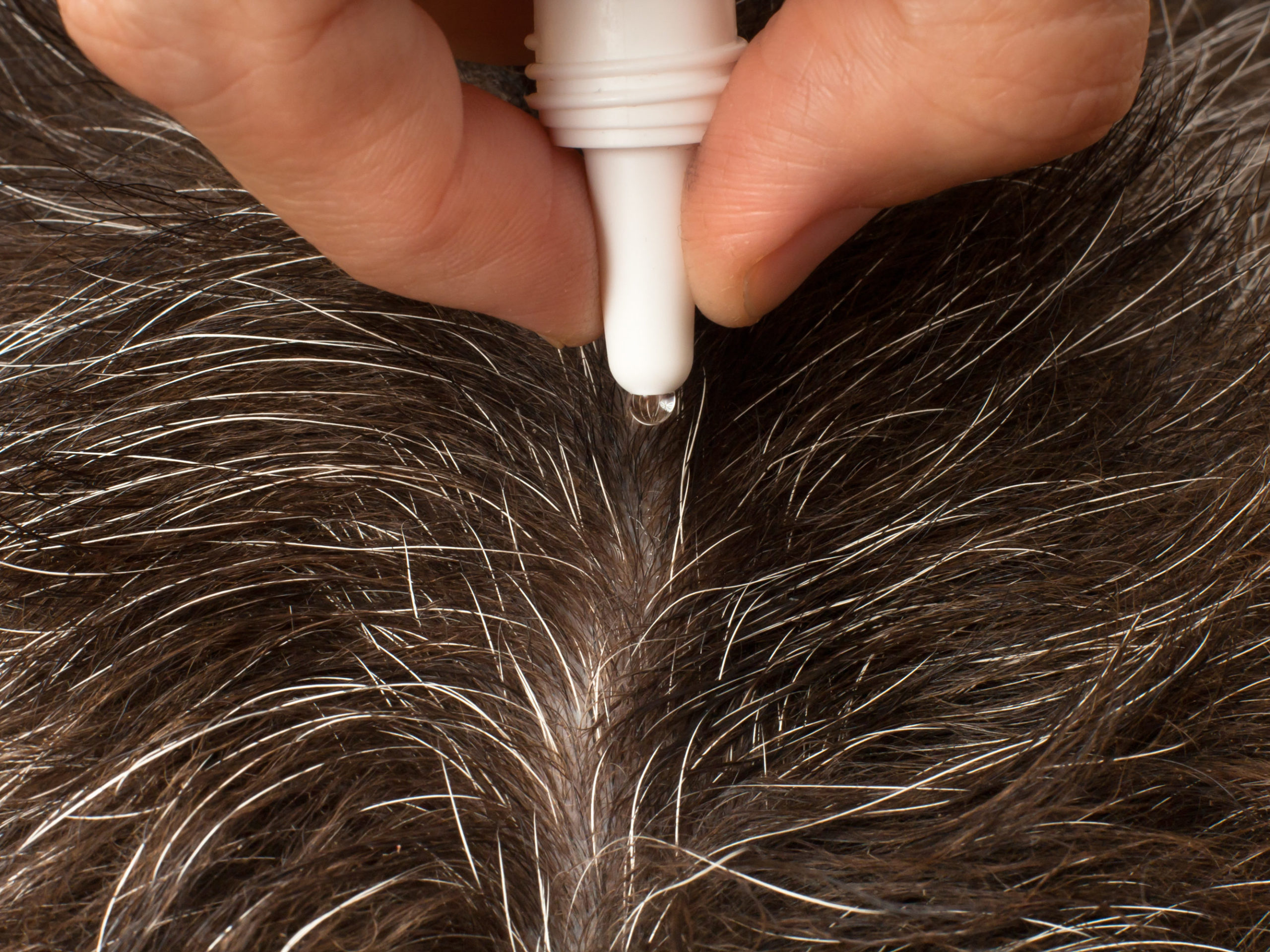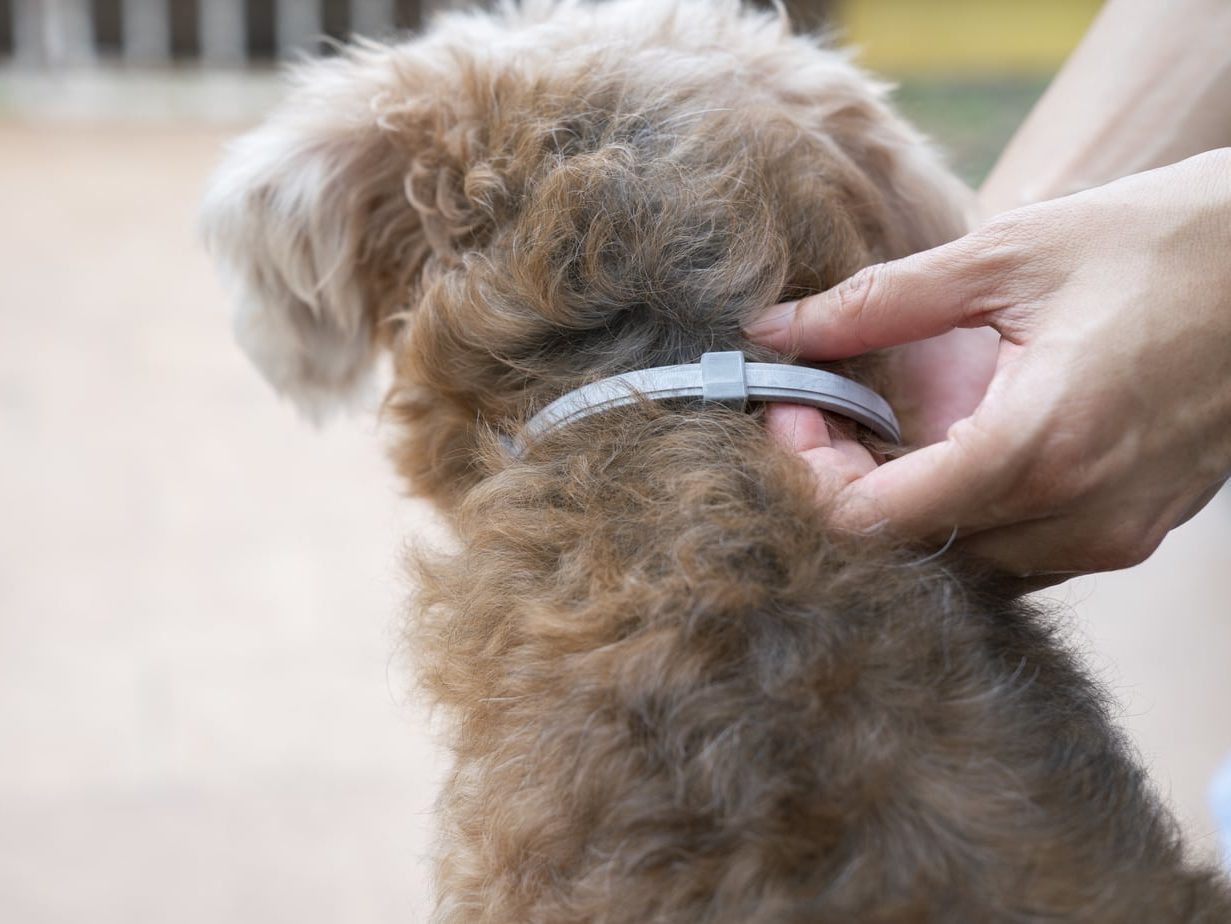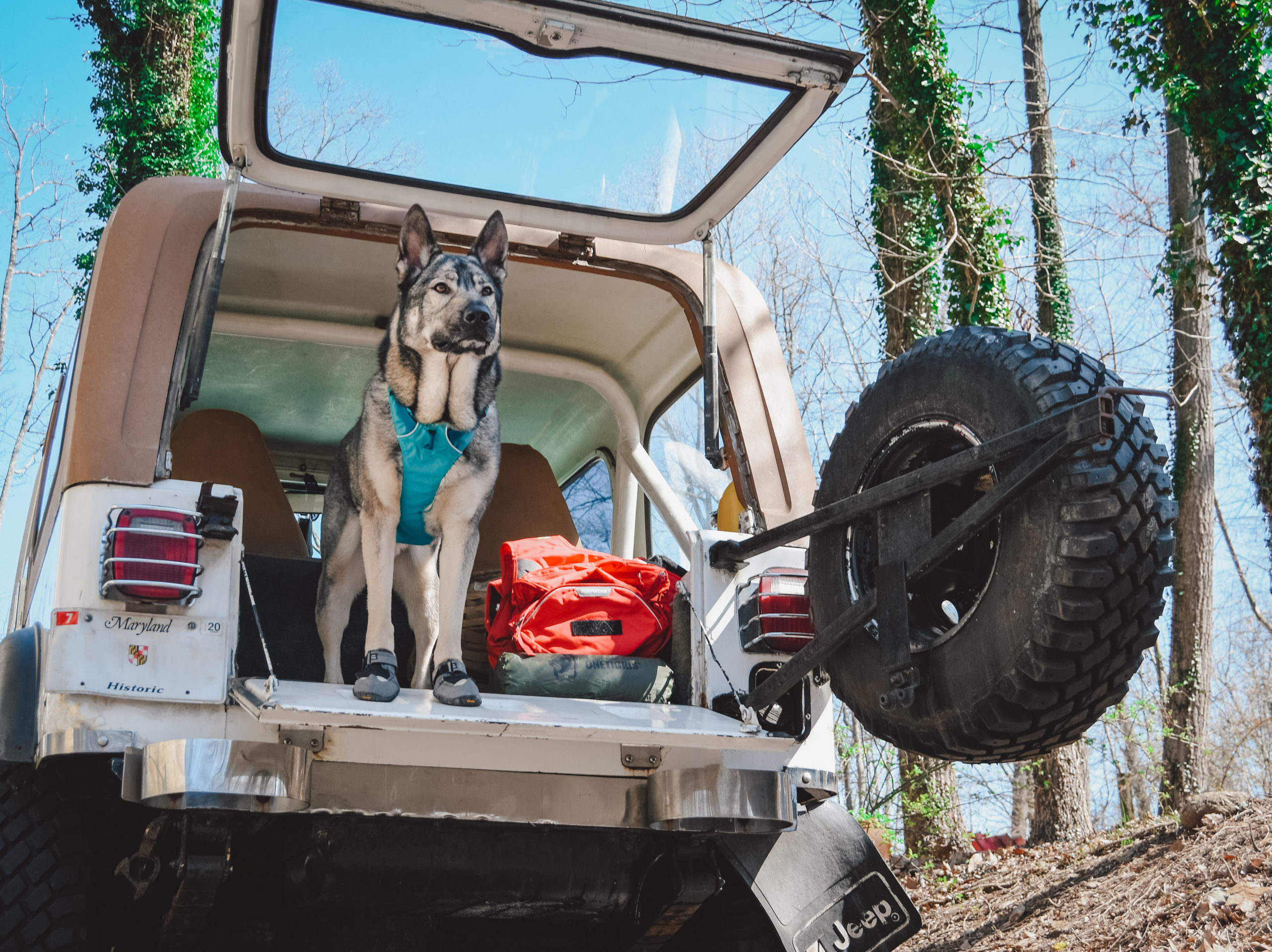Fleas & Your Dog – Everything You Could Need To Know
By admin / May 17, 2022 / No Comments / Pet Dogs
Fleas are one of the most frustrating things you can deal with your dog. No one will disagree with that.
Yet, spring is such a wonderful time of year! The sun is a little shinier, the sky is a little bluer, and the trees and flowers are bursting with colour. Just wonderful, isn’t it?
But for many people, it also means dealing with a multitude of dog fleas that have taken up residence on their unsuspecting furry friend.
Not only are these pesky parasites a nuisance, but they can also be a health hazard for your poor pup.
So what are fleas, and how do we get rid of them?
What Are Dog Fleas?
Dog fleas are small, dark copper/brown coloured insects, about the size of a pinhead, that drink blood to survive. For every flea you see on your dog, there are probably a hundred more lurking and growing around your home.
There are around two thousand different species of fleas, but it’s mainly two types of fleas that commonly harass our furry friends.
The first is the Ctenocephalides canis, commonly known as the dog flea. It affects dogs in many different parts of the world, but it’s the dominant species in central and Eastern Europe, Ireland, and Argentina.
The second is the Ctenocephalides felis, which, ironically, is the cat flea. It’s the main species that affect dogs in the USA, Mexico, and western Europe.
Now we know the real reason why dogs dislike cats so much!
But how do dogs pick up these unwanted hitchhikers anyway?
How do Fleas Spread?
Fleas are a problem all year round, but in the warmer months, the population literally explodes as the fleas can develop and lay eggs much faster in higher temperatures.
Fleas prefer temperatures of 65-80 degrees and humidity levels of 75-85 per cent.
Dogs collect fleas in a number of ways. By far, the most common way is through contact with another infected animal.
However, fleas can also hitch a ride on their human owners and live on clothing, bedding, carpets, and furniture.
In fact, even your car can be an ideal breeding ground for dog fleas.
These pesky critters have super-strong back legs and can jump incredibly far for their size- about 100 times their length.
That’s the equivalent of an average dog owner leaping a whopping 250 feet vertically and 450 feet horizontally.

Why Are Fleas Such a Problem?
When a flea lands on your dog, it will start feeding almost straight away and can draw blood for up to a pretty impressive two and a half hours.
Another slightly gross but true fact is that a female flea can consume up to 15 times their own body weight in blood daily.
You’ve got to give it to them. They’re dedicated.
Unfortunately, while a flea is busily feeding, it could also infect your dog with harmful bacteria and viruses. Fleas can also cause anaemia by robbing your dog of red blood cells, and in very extreme cases, this can even lead to death.
Dogs can also develop allergic reactions to flea bites. Proteins in the flea’s saliva can cause a reaction leading to hair loss and painful skin inflammation.
And if that wasn’t enough, fleas are also responsible for spreading tapeworms to both dogs and humans.
Female Fleas and Reproduction
Chances are there’s a flea or two in your house, even if you’ve never seen them.
Female fleas can lay as many as twenty eggs every day – that’s over 600 eggs in just one month!
They usually lay their eggs on your dog’s body, but they could also be found around your home in places like your carpets, bedding, and furniture.
Flea eggs hatch within days, and the resulting larvae burrow into carpet fibres or other hiding spots where they spin a cocoon and pupate.
Once they emerge as adults, they’re ready to mate and start the cycle all over again, so it’s easy to see how it can get out of hand pretty quickly.
The whole process takes about two weeks, but it can take longer depending on temperature and humidity.
How Do You Know if Your Dog Has Fleas?
The most obvious sign is when dogs excessively scratch or bite themselves.
You can check for fleas by inspecting the furry areas on your dog’s belly and inner thighs.
Flea droppings (also known as flea dirt) are another tell-tale sign of an infestation, but these can be tricky to spot on dogs with dark fur and are often confused with dirt – to check this you can actually wet a little of the dirty skin and it will either go more brown or more red. These will show the ‘dirt’ to be real dirt e.g. mud or flea dirt, aka blood flecks.
However, to be sure, try using a fine-toothed flea comb that’s specifically designed for finding dog fleas.

Natural Flea Deterrents
I love to have some natural flea deterrents handy because To deter fleas naturally, try some of these handy solutions:
Brewer’s Yeast
A simple yet effective flea repellent is brewer’s yeast that can be fed as part of your dogs regular diet. This is because it naturally contains thiamine. When consumed by dogs, thiamine causes their skin and blood to taste and smell unpleasant to fleas.
Essential Oils
Essential oils such as lavender and peppermint are often used because they’re effective at deterring fleas. These oils can be added to water to make a spray (we love this for hiking!) or added to your dog’s shampoo.
The following are natural deterrents for fleas
- Cedarwood
- Clove
- Lavender
- Lemongrass
- Peppermint
- Rosemary
- Rose Geranium
Always dilute any essential oils you use, don’t put undiluted oils directly on your dog. Not all essential oils are safe for your pup, so make sure you do your homework before trying this method.

Apple Cider Vinegar Spray
Apple cider vinegar is a great natural option. It won’t kill the fleas but works really well as a deterrent.
Just mix one part vinegar with 3 parts water and use it as a spray. It can be applied directly to your dog’s coat or sprayed onto their bedding, carpets, and other areas where fleas may tend to congregate.
If your dog tolerates the smell well, you can up the amount of vinegar used in the solution to equal parts.
Always be careful when spraying your dog’s coat that you don’t spray anywhere near your pup’s eyes.
Coconut Oil Rub
Use topically by simply massaging a small amount of coconut oil into your dog’s fur. Pay particular attention to areas where fleas are likely to gather, such as the neck, arm pits and base of the tail.
Lemon Bath
This popular sour fruit is brilliant at deterring fleas due to its acidic nature.
Just mix half a cup of lemon juice with two cups of water and add a little bit of pet-friendly soap or shampoo.
This should be limited in it’s use as it may damage skin or coat.
Chemical Deterrents for Fleas
If you need a more powerful, long-lasting flea deterrent, there are a number of chemical options available:
Flea Powders
Designed to be used directly on your pet, flea powder suffocates the fleas or causes them to dehydrate and die.
However, it’s important to choose a powder that is safe to use on your dog. Some can cause allergic reactions, while others aren’t suitable for use on puppies under a certain age.
Flea Sprays
Flea sprays are available in aerosols or pump bottles. They are designed to be sprayed directly on dogs, their bedding, furniture, or around the perimeter of your home (for outdoor use) to keep the little critters at bay.
Flea Shampoo
Most are designed to kill fleas on contact, although some only repel them.
There are natural flea shampoos available. However, many of these products may not provide the same levels of protection and effectiveness as their chemical counterparts.

Spot-On Treatments
Likely the most common option for the modern dog – it’s even what I use with my dogs. These products release a chemical that’s absorbed into the oil glands on your dog’s skin, and it gradually spreads throughout their body.
Apply directly to your dog’s skin in a place that your dog can’t reach to lick at it, usually behind the neck or along the back.
We used the k9 Advantix and have yet to have an issue across our trio.
Oral Medications
These are available in both prescription and over-the-counter forms and kill adult fleas or interfere with the development of eggs and larvae.
Injectable Medications
Available through a veterinarian, these powerful treatments work by releasing a small amount of medication before spreading throughout the body.
Injectable medications are more expensive than other treatments and must be administered by a professional.

Flea Collars for Dogs
These handy collars work by releasing chemicals that kill fleas when they come into contact with your dog. The main benefits include:
- Easy to apply, just slip the collar around your dog’s neck and make sure it is a comfortable fit.
- A cost-effective way to prevent and treat flea infestations, they last for months.
- Protects against both fleas and ticks.
- Offers protection against other pests, such as mosquitoes.
The downsides of using a flea collar include:
- The chemicals in the collar can cause allergic reactions. If this happens, remove the collar and wash your pet’s neck with gentle soap and water.
- It’s not as effective if your dog swims or gets wet often.
For an easy, affordable way to prevent or treat flea infestations, a flea collar is a great option.

How To Use These
These things are all really useful options across the board – but using them appropriately is always a good idea. For example, depending on your area and flea prevalence, you may wish to treat all year round, and add in certain supplements at a certain time of year to ensure they’re really well protected.
Personally? I give a break from chemical treatment during the winter months (December, January and February) as we’re usually under freezing temperatures at that stage and flea risk is minimal.
But we pick up our spot-on treatment for the other 9 months of the year and then add a topical deterrent for hikes or other high-risk flea activities.
In short, Fleas suck & prevention is better than cure.
Fleas are one of the most common parasites that can affect a dog. They thrive in warm weather and can make your dog terribly itchy and cause skin inflammation and hair loss.
However, the best way to deal with fleas is to prevent them in the first place.
Luckily, you can do this with a variety of products, from chemical treatments to more natural holistic solutions.
If you believe your dog has a flea problem that’s spiralling out of control, it’s important to consult your veterinarian so that they can recommend the best course of treatment.
Fleas are usually an issue when ticks are an issue – do you need to check out about ticks too? go read Tick Prevention: How To Stop Your Puppy Getting Ticks
Author, Ali Smith
Ali Smith is the Positive Puppy Expert, dog trainer and is the founder of Rebarkable. She is passionate about helping puppy parents get things right, right from the start. To help create a puppy capable of being a confident and adaptable family member and keep puppies out of shelters.
Ali has won multiple awards for her dog training, and has had her blog (this blog!) rated as 2021 & 2022 worlds’ best pet blog!
Link to originalRebarkable
